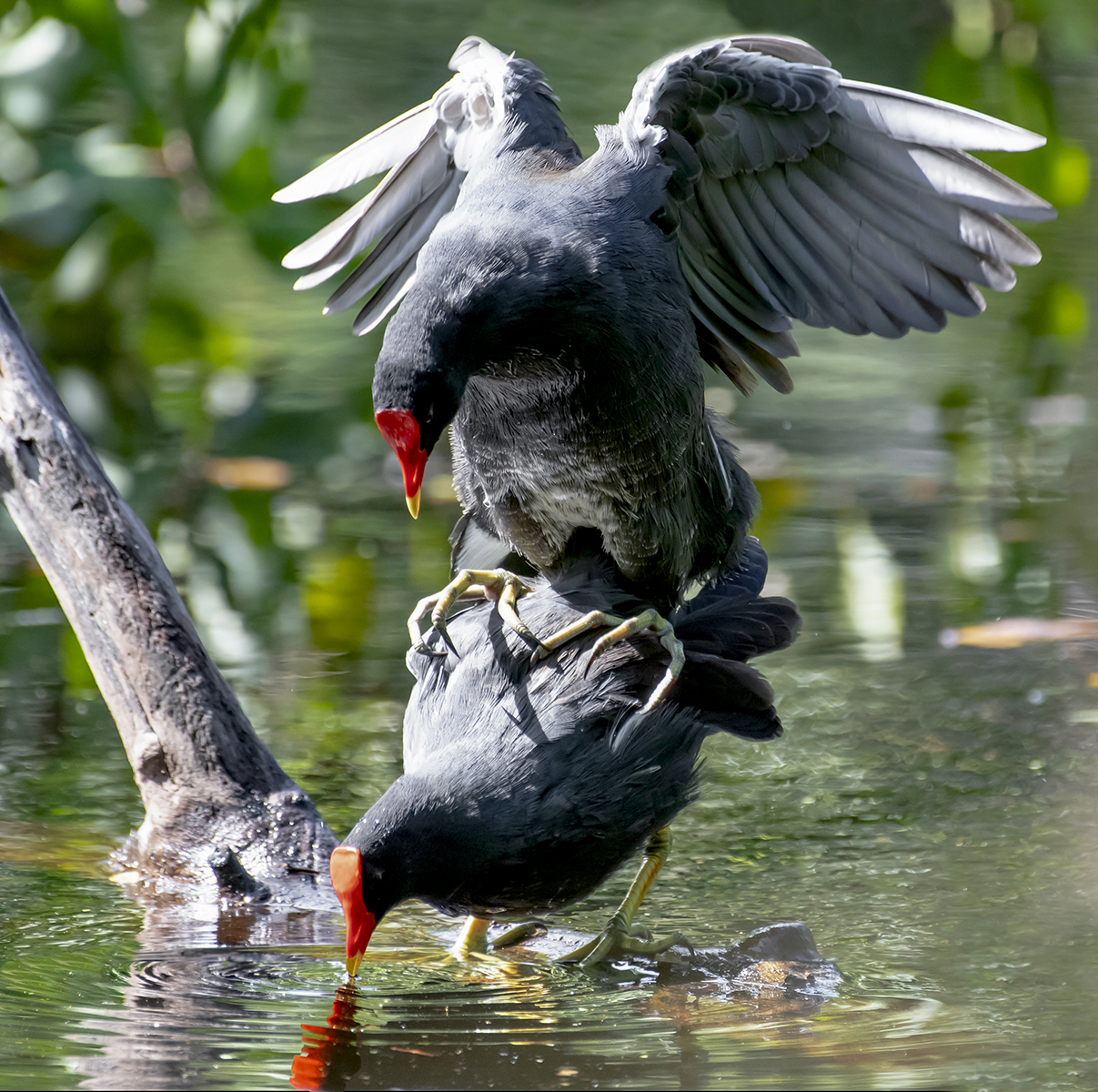
Back behind the busy winter beaches, Common Gallinules (aka moorhens) go about their lives largely undisturbed. Except when prying photographers invade their space, and maybe get overly involved in their family business.
Last November, I was sitting quietly near a flooded wetland area, after a couple of weeks of rain. You might think that’s a messy place to have a meditative moment, and in fact I later realized that the log I was sitting on was full of termites (when they started crawling on my legs). But some birds prefer hidden, muddy places like this, and it has become one of my favorite birding and resting spots. Though it’s better if I bring something to sit on.
After a little while two gallinules came into view from different directions, and I noticed that they were approaching each other. Since I had my camera with me, I thought it would be good to get a picture of two of them together, with their bright red bills and face shields.
When they met up, they seemed to quietly bow to each other.
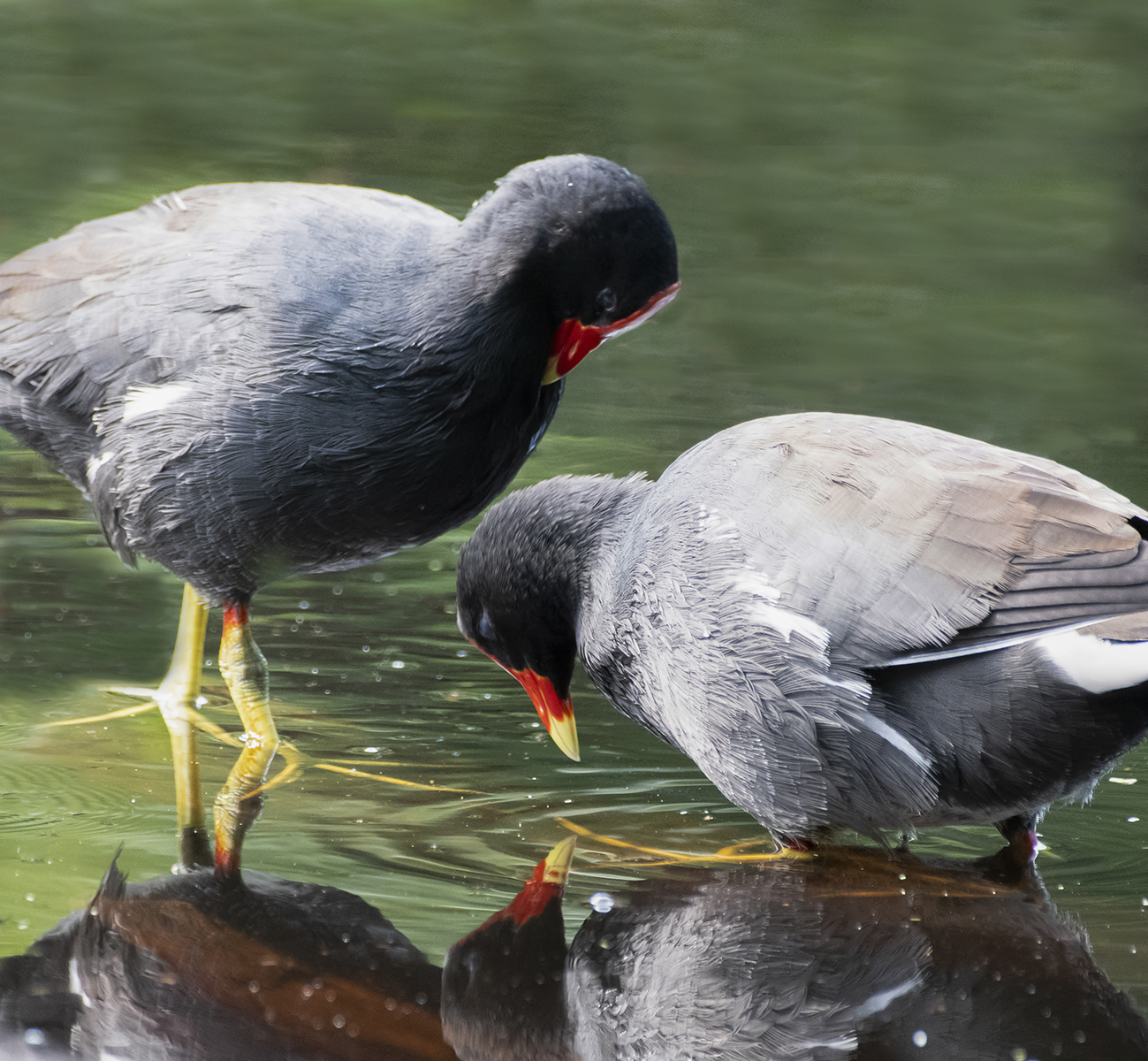
Then after about a minute or so he put his foot on her back and began to climb up. Oh. Even with a telephoto lens, behind some bushes, I felt like I was maybe intrusive. They didn’t seem to notice me though, and I didn’t want to disturb them, so I stayed put and observed their intimate moment. (And then, of course, I couldn’t resist putting the photos in the newspaper.)
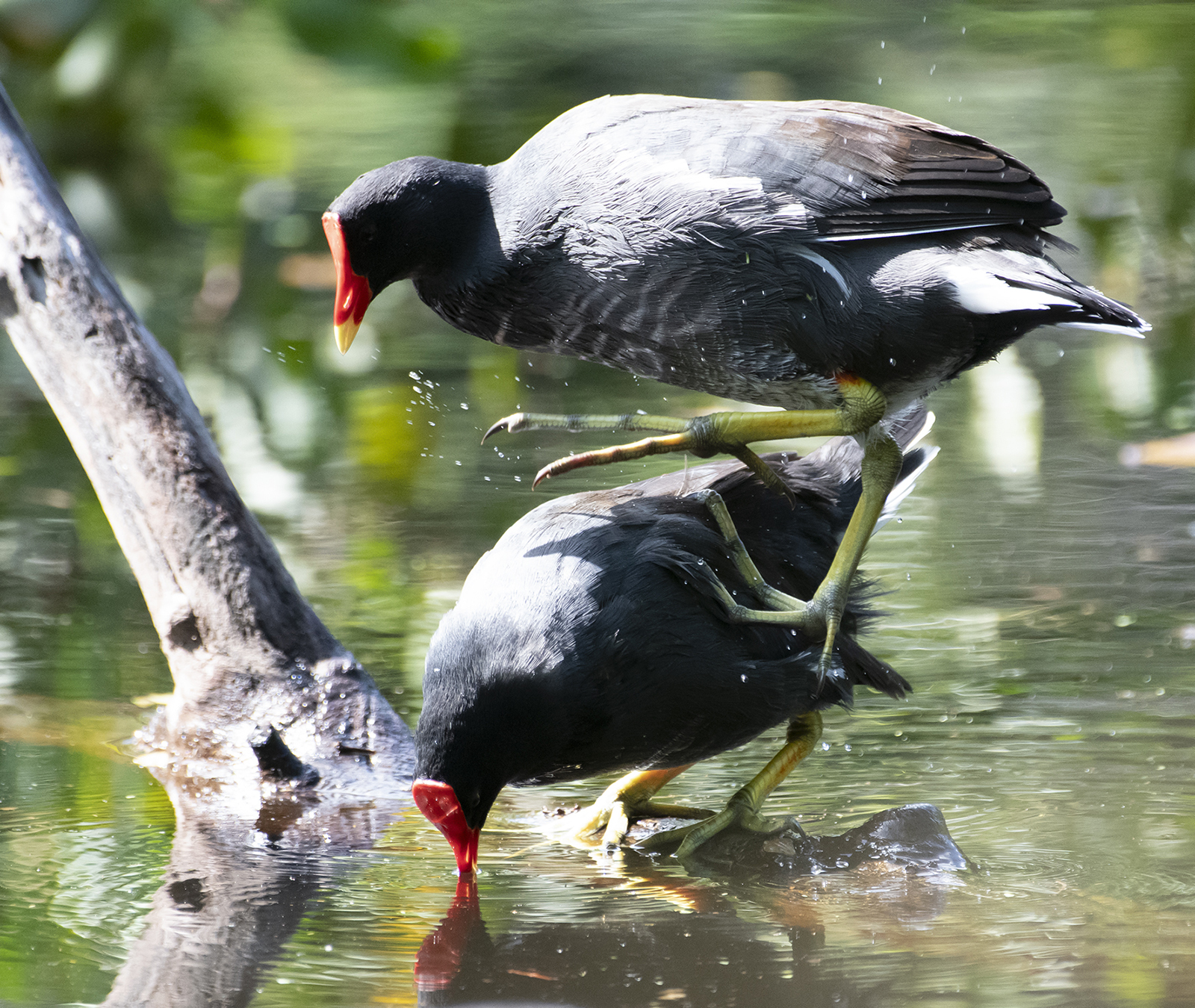
After a few weeks I returned and started looking around for their nest, since the eggs usually hatch after about 3 weeks, and gallinule nests are sometimes pretty much out in the open and easy to spot.
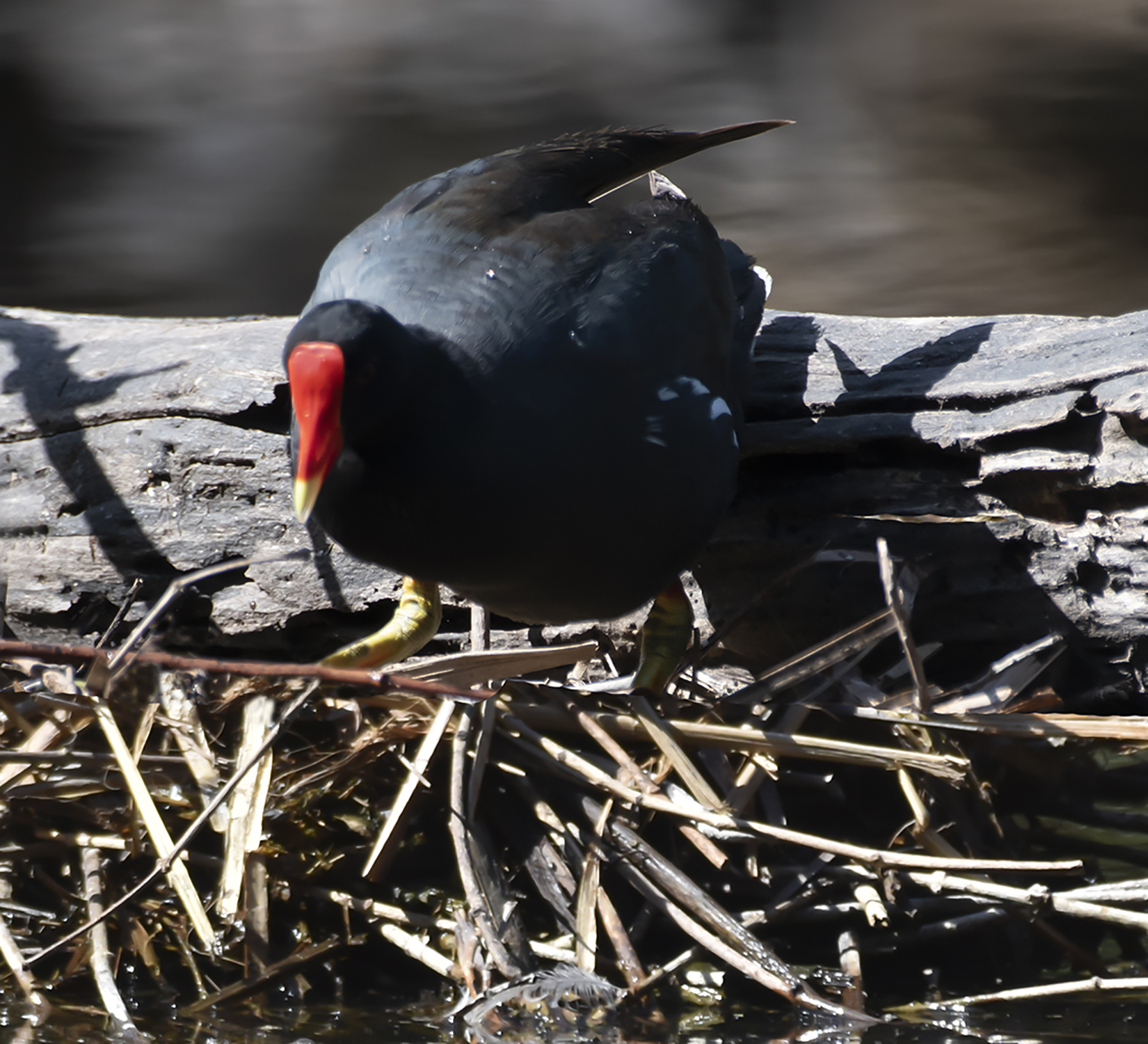
When the gallinule chicks are very small, they stay in the nest under the protection of the mother’s feathers. They have dark, fluffy feathers and red bills, and are partially bald, with red patches on the tops of their heads. Both parents feed and care for them. But very soon the chicks were ready to come out and start swimming around the pond, foraging with their parents.
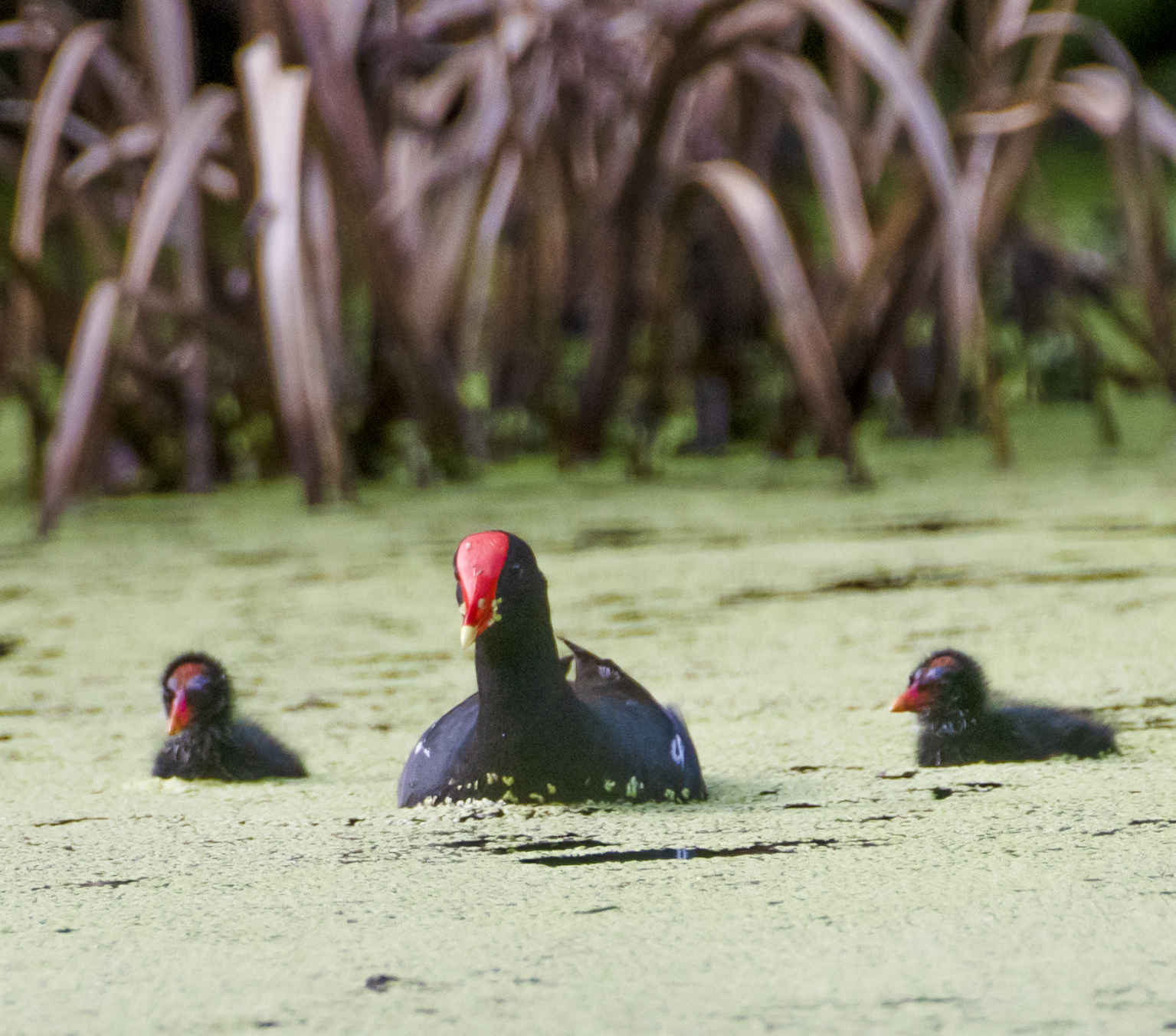
As it happened, by the time the chicks emerged the small pond was almost entirely covered with tiny, floating aquatic plants. It looked at first like green algae but was actually a type of duckweed. It didn’t seem like a good environment for the little chicks to try to swim through.
However, it turned out that the gallinules liked to eat the tiny green plants, and swam through them easily, gobbling up the weeds as they went along.
By early February the chicks were getting pretty big. Their bills had turned yellowish, and their feathers had grown in, now gray and brown, with no bald spots. They seemed to be thriving on the duckweed, and were almost as large as their parents.
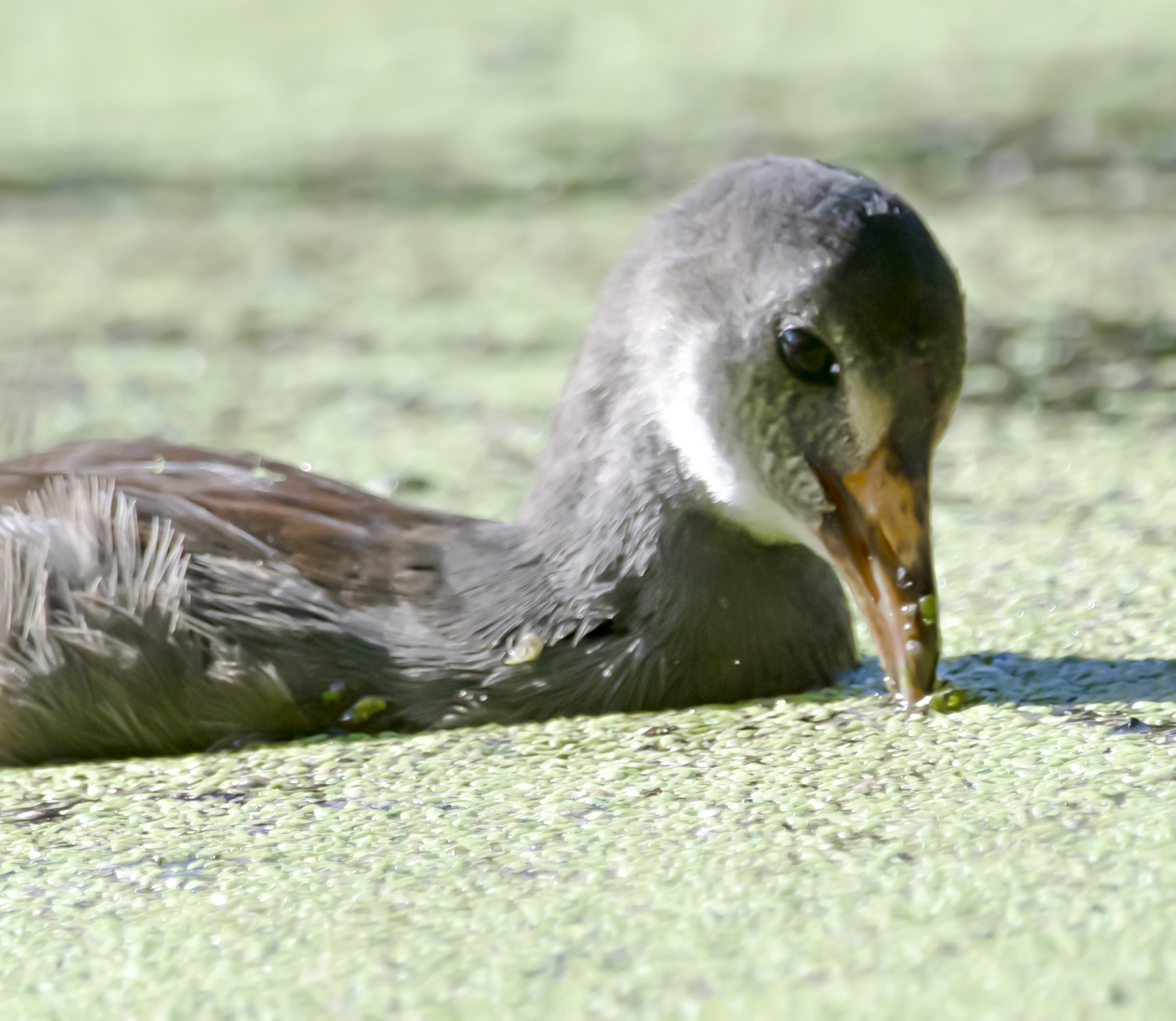
When I returned in late February, the pond water had cleared. Did they eat all those little plants?
The chicks were close to being adults now, but still seemed to be pestering their parents for food. Or maybe just arguing, like teenagers do.
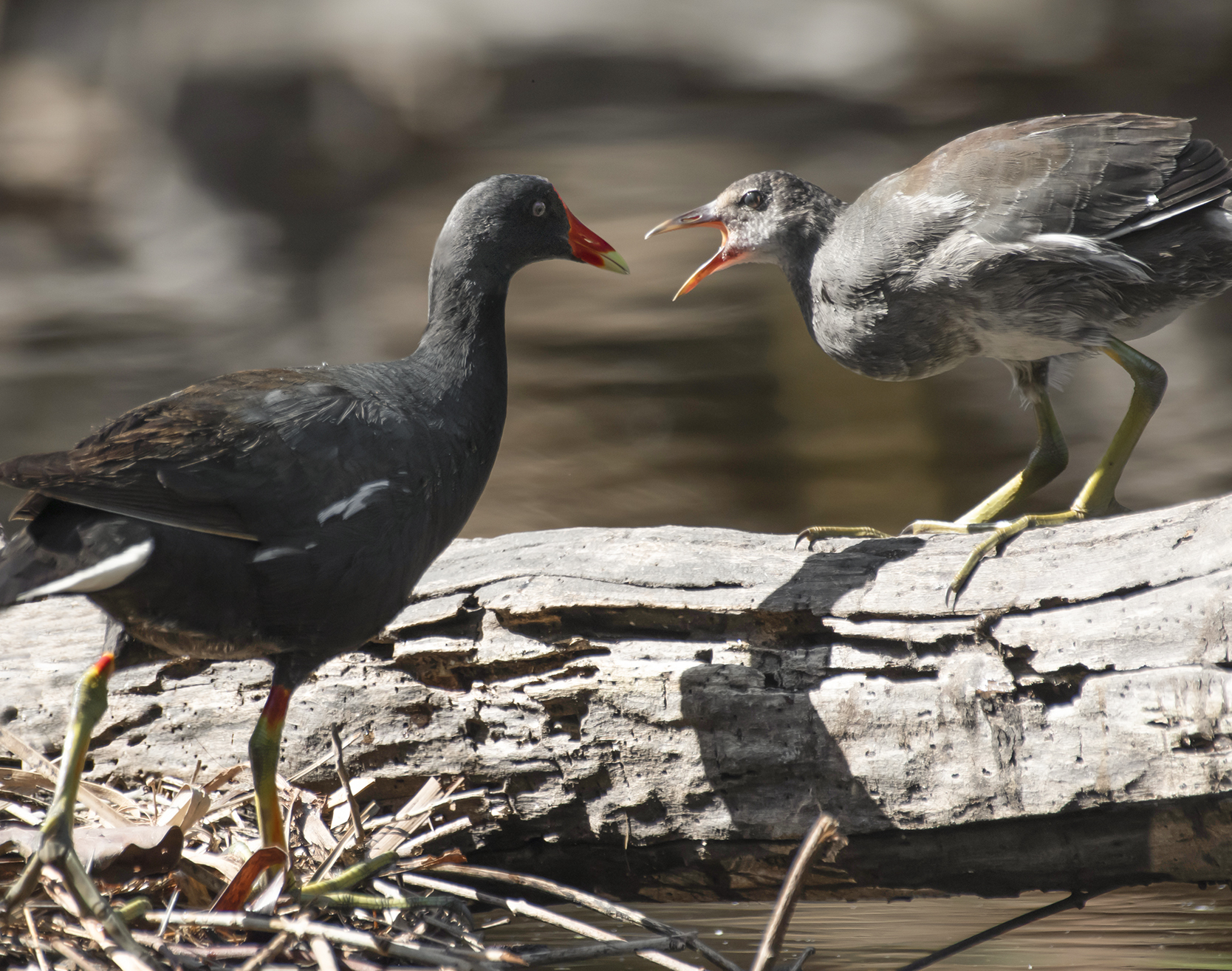
The next step towards adulthood is to grow dark feathers, and a red shield above the bill, which is the trademark look for Common Gallinules.
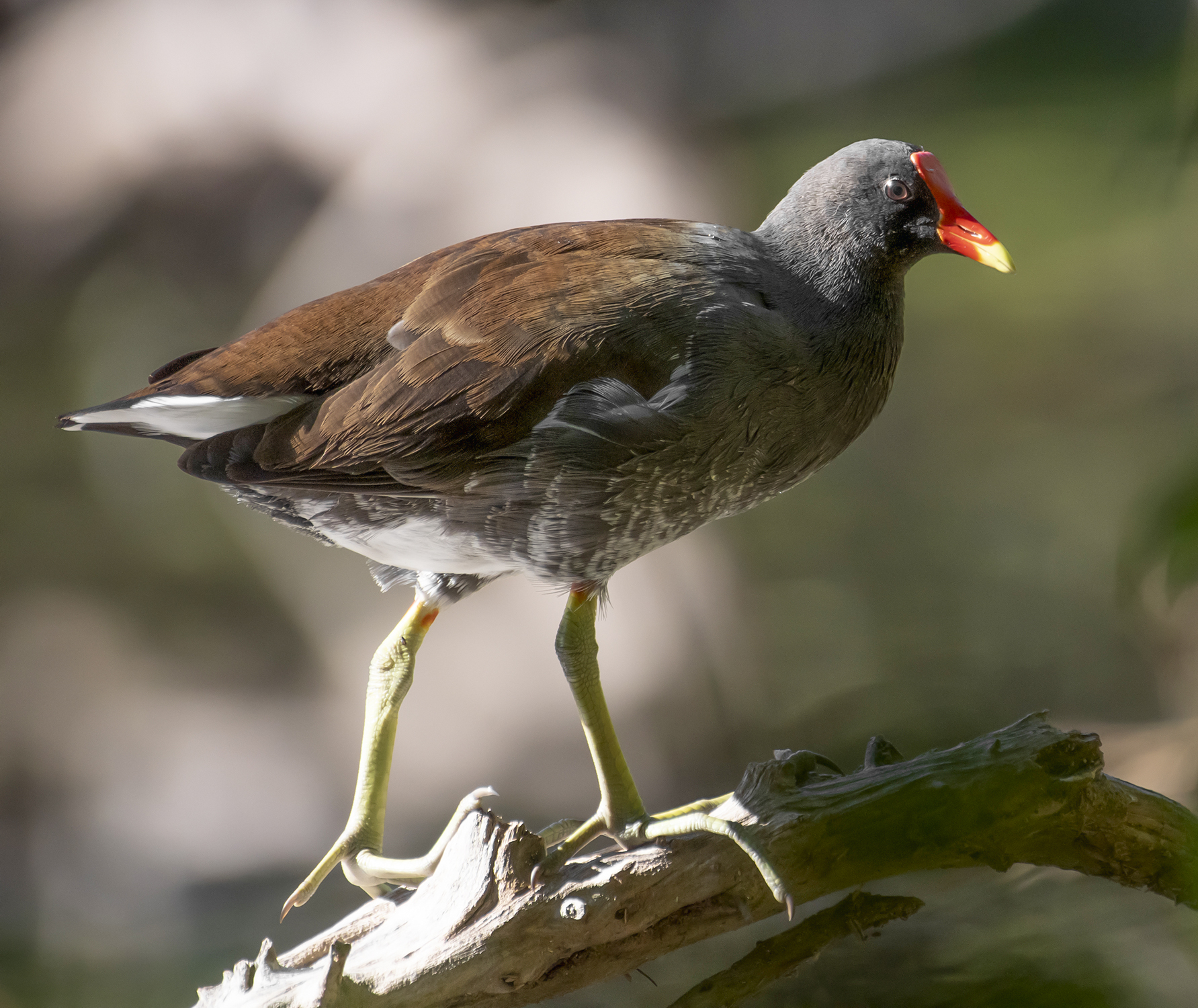
The shields may provide some protection to the birds’ heads, but will also swell up and get redder and shinier during breeding season, in part to attract mates. Fortunately, the birds don’t seem to mind that their red heads also attract curious pond paparazzi.
Gail Karlsson is an environmental lawyer, writer and photographer. She is the author of two books about the Virgin Islands – The Wild Life in an Island House, and the guidebook Learning About Trees and Plants – A Project of the Unitarian Universalist Fellowship of St. John. She has also recently published A Birds’ Guide to The Battery and New York Harbor. Follow her on Instagram @gailkarlsson and at gvkarlsson.blogspot.com.


